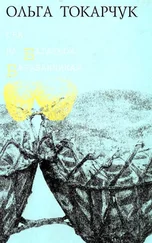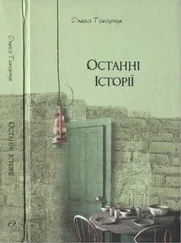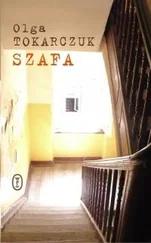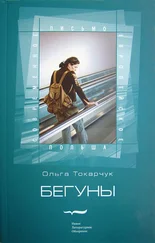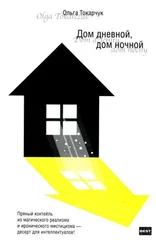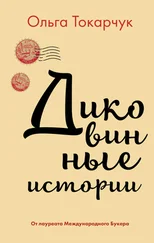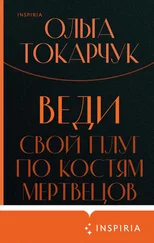I am certain that we cannot recognize the fate grooved into the other side of life for us by the divine Engravers. They must appear to us only once they’ve taken a form intelligible to mankind, in black and white. God writes with his left hand and in mirror writing.
During his second year at university, in 1676, on a May evening, Filip, going up the narrow stairs to the little floor he rented from a certain widow, tore his trousers on a nail, also – as he saw only the following day – harmlessly injuring his calf. A red mark was left on his skin, drawn by the sharp part of the nail, a dash of a few centimetres adorned by drops of blood in little points; the careless movement of the Engraver on the delicate human body. After a few days a fever had begun to consume him.
When the widow finally called the medic, it turned out that the little wound had already been infected; its edges kindled to red and had swollen. The medic prescribed poultices and broth for strength, but already by the next evening it had become clear that there would be no way to stop the process, and that the leg would have to be cut off just below the knee.
‘Not a week goes by that I don’t have to amputate something off someone. You still have another leg,’ the medic apparently said to cheer up Filip. The medic would later become his friend, and he was my uncle, Dirk Kerkrinck, for whom Filip executed quite recently several anatomical engravings. ‘You’ll have a wooden crutch made, and at worst you’ll just be a bit noisier than you have been until now.’
Kerkrinck had been a student of Frederik Ruysch, the best anatomist in the Netherlands, and perhaps the world, so the amputation was an exemplary one and came off perfectly. The part was divided from the whole smoothly, the bone sawed evenly, the blood vessels closed, cauterized precisely with a glowing hot rod. Before the operation, the patient grabbed his future friend by the sleeve and begged him to preserve the removed leg. He had always been very religious, and he must have taken it literally that in our resurrected bodies we would rise from the grave in our physical form, with Christ’s coming. He told me later that at the time he was very fearful that his leg might rise on its own; he wanted his body to be buried, when the time came, as a whole. Had it been an ordinary medic and not my uncle – had it been someone off the street, an ordinary barber-surgeon, the kind who cuts off warts and pulls out teeth – he would not, of course, have fulfilled this bizarre request. Ordinarily the severed limb would travel, shrouded in cloth, to the cemetery, where with solemnity, though with no religious formalities, it would be placed in a small hole, which they wouldn’t even mark out. But my uncle, while the patient slept, knocked out by rectified spirit, took meticulous care of the leg. Above all with the aid of an injection of a substance, the composition of which his master had kept a secret, he removed from the blood and lymphatic vessels all the contaminated blood and infiltrations of gangrene. When the limb had been thus drained, he placed it in a glass vessel filled with a balm of Nantes brandy and black pepper, which was to permanently protect it from destruction. When Filip awoke from his alcoholized anaesthesia, his friend showed him the leg drowned in brandy, just as mothers are shown newborns after giving birth.
Verheyen recuperated slowly, in the attic of a little house down one of the small streets of Leiden, where he was boarding with the widow. It was she who took care of him. Who knows how this would all have ended had she not been there. The patient became quite depressed, as a matter of fact; it’s hard to say whether it was because of the ceaseless pain of the healing wound, or just because of his new situation. At the age of twenty-eight he had, after all, become an invalid, and his theological studies had thus ceased to make sense – without his leg, he could not be a pastor. He did not allow anyone to notify his parents, overwhelmed by shame at disappointing them. Dirk would pay him visits, as well as two colleagues drawn – it seems – less by the suffering of the patient than they were by the presence on his headboard of the amputated limb. It appeared this scrap of the human body was now living its own life as a specimen, submerged in alcohol, in a perpetual haze, dreaming its own dreams of running, of wet morning grass, of warm sand on the beach. A few fellow theology students also came to see him, and to them Filip ultimately confessed that he would not be returning to his studies.
When the guests would leave, the owner of the house, the widow, Mrs Fleur – whom I later met and consider an angel – would appear in Filip’s room. Filip lived in her home for quite a few more years, until he bought a house in Rijnsburg and settled down there for good. She’d bring with her a basin and a tin jug filled with hot water. Although the patient no longer had a fever, and no blood seeped out from his wound now, the woman would delicately wash off his leg and help the student bathe. She would then dress him in a clean shirt and trousers. The left legs of his trousers she had already sewn for him, and everything she touched with her clever hands looked natural, in order, as though that were precisely how God had created it, as though Filip Verheyen had been born without his left leg. When he had to get up to use the chamber pot, he would lean on the strong shoulder of the widow, which at first was exceedingly awkward, but then became natural, like everything connected with her. After several weeks she moved him downstairs, where he ate with her and her two children at the heavy wood kitchen table. She was tall and sturdy. She had wild, curly blonde hair, like many Flemish women, which she concealed beneath a linen cap, though there was always one lock of it that escaped onto her back or over her forehead. I suspect that at night, as the children slept their innocent sleep, she would go to him as she did when with the chamber pot, and get into his bed. And I don’t see anything wrong in it, for I believe that people ought to support each other in any way they can.
In the autumn, when the wound had healed completely, and upon the stump there remained only a reddish trace, Filip Verheyen, tapping his peg over the uneven paving stones of Leiden, went every morning to lectures at the university medical centre, where he began his studies of anatomy.
He soon became one of the most respected students, for he was able to make use of his drawing talent like no one else in order to transfer onto paper what at first glance to the inexperienced eye looked like a chaos of tissues in the human body – tendons, blood vessels and nerves. He also copied Vesalius’ famous hundred-year-old atlas and acquitted himself very nicely of this exercise. It was the best introduction to his own work, the result of which would make him famous. To many of his students, among whom I, too, numbered, he had a paternal relationship – full of love, but also stern. Under his supervision we carried out autopsies, and then his attentive eye and expert hand would lead us down the paths of that most complicated labyrinth. Students valued his firmness and detailed knowledge. They watched the swift movements of his tracer as though witnessing a miracle. Drawing is never reproducing – in order to see, you have to know how to look, and you have to know what you’re looking at.
He had always been rather taciturn, and today with the perspective of time I can say that he was also somehow absent, absorbed in himself. Gradually he gave up his lectures, shifting over fully to lonely work in his workshop. I would visit him often in his home in Rijnsburg. I was pleased to bring him news from the city, gossip and sensational stories from the university, but I was unsettled to notice that he had become increasingly obsessed with a single topic. His leg, dismantled into parts, investigated in as much detail as possible, always stood in its jar on his headboard or stretched scarily out on the table. When I realized that I was the only person he had any contact with, I also understood that Filip had crossed over an invisible boundary, a point of no return.
Читать дальше

